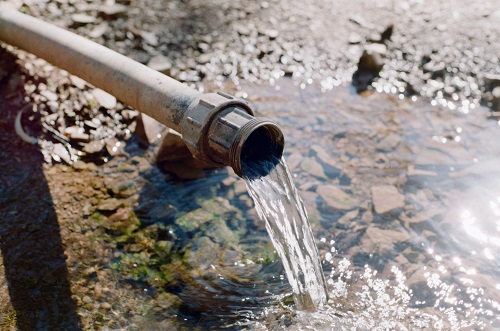People have known about the health dangers associated with mercury exposure for some time. I recently came across an extract from a mid-19th century journal, which, with reference to the occupational use of mercury by hatters, spoke of ‘the dangers of its fumes’. That article was published in November 1845, a little less than a century before the American chemicals industry would synthesise the first PFASs (i.e. per- and poly-fluoroalkyl substances).
Today, there are thousands of different PFASs, many of which are found throughout the global environment (including in humans) owing to their widespread use in commercial products such as food packaging, textiles, paints, non-stick cook-ware and fire-fighting foams. Like mercury in its organic form, methylmercury, many PFASs are environmentally persistent and bioaccumulative. From the Arctic Circle to the Southern Ocean, and in the blood of unborn human babies, these substances that didn’t exist prior to the Second World War are now ubiquitous.
Both mercury and PFASs are examples of substances (one naturally occurring and one synthetic) that were (or are) used to improve the efficiency or effectiveness of industrial processes and commercial products, but about which concerns over health impacts have also arisen. However, the nature and degree of health impacts associated with exposure to PFASs remains a topic of contention, whereas the dangers of methylmercury exposure appear to be comparatively undisputed (think Minamata Disease, which is widely enough accepted as being a consequence of methylmercury exposure that the global Convention on Mercury was named for it).
Mercury and PFASs in Australia
In Australia, there has been a recent focus on local land and water contamination arising from the historical use of PFAS-containing fire-fighting foams during training exercises at sites such as military bases, airports and other fire-training facilities. Mercury is no longer used extensively in industrial processes in Australia – the main sources of emissions are from coal-fired power stations, non-ferrous metal refineries (e.g. zinc, lead, aluminium, gold and copper) and cement production where mercury is emitted as a waste product and allowed to contribute to global mercury loads or local pollution.
While the mercury issue is much older, the level of regulation in relation to PFASs and mercury is surprisingly similar. For instance: relevant global conventions have been left unratified by Australia (i.e. the Minamata Convention on Mercury and 2010 amendments to Annex B of the Stockholm Convention on Persistent Organic Pollutants that restrict production and use of particular PFASs); Australia’s industrial chemicals regular, NICNAS, has conducted assessments and made recommendations, though has limited enforcement power; some food and water standards have been established; and while there have been some attempts at national coordination (e.g. the PFAS National Environmental Management Plan), for constitutional reasons, the states and (and territories) have been left to take varying degrees of action under state planning and contaminated land laws. Additional legal complexities arise where contamination has emanated from Commonwealth controlled military bases but affected state-controlled land, such as at Williamtown in NSW where a legal dispute brought by the local community against the Commonwealth Government concerning contamination from an air force base was recently settled.
Further, in relation to both mercury and PFASs, like many environmental problems, this regulation is inextricably bound up with science and expertise. And an inescapable component of that relationship is uncertainty. Uncertainty around exposure pathways (some PFASs break down into potentially more problematic PFASs, and some studies have found higher concentrations of PFASs leaving water treatment plants than what went in), remediation, health impacts, social impacts etc.

In Australia, mercury is emitted to the atmosphere from coal-fired power stations, non-ferrous metal mining and cement production. PFASs have entered the environment through their widespread use in commercial products, including fire-fighting foams used at sites such as airports. Image credit: Carley Bartlett, 2019
Researching the relationship between science and law
My research aims to examine the relationship between the production of knowledge (including scientific knowledge) and the legal responses to PFAS contamination in Australia, particularly around military bases and fire-training facilities. In doing so, I will examine how different actors who are involved in the same environmental problem (such as scientists, lawyers, policy-makers, community leaders and journalists) enact notions like risk, uncertainty and harm in relation to PFAS contamination. The project will treat the plurality of knowledges that are produced about PFASs not as objective truths but as situated knowledges i.e. nothing will be viewed as neutral. The purpose of opening up the problem in this way is to think about the governance of environmental problems in a way that illuminates the complexities of the issues and the relations at hand, rather simplifying them.
My research is still in its infancy, but I hope that by using this approach I will be able to develop in-depth examples of how knowledge and law get produced in relation to PFASs in Australia. My hope is that this could also help to illuminate some of the ongoing regulatory challenges associated with other environmental problems with similar characteristics, such as those associated with mercury.
By Carley Bartlett, PhD candidate at UNSW Law



Twitter